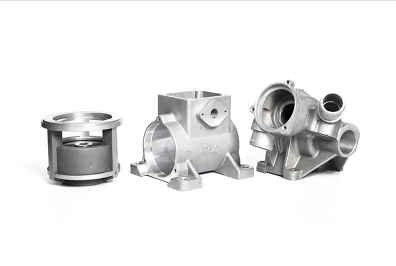Mobile:+86-311-808-126-83
Email:info@ydcastings.com
Understanding the Phases Involved in the Sand Casting Process for Beginners
Stages of Sand Casting
Sand casting is a widely used metal casting process that involves the pouring of molten metal into a mold made of sand. This method has been utilized for centuries, thanks to its versatility, low cost, and ability to produce complex shapes. Understanding the various stages of sand casting is crucial for anyone interested in metalworking or manufacturing. This article will guide you through each stage of the sand casting process, highlighting its importance and intricacies.
1. Pattern Making
The first stage in the sand casting process is pattern making. A pattern is a replica of the final product made of durable materials like wood, plastic, or metal. Patterns can be produced in various forms, including solid, split, or core patterns, depending on the shape of the desired casting. The size and complexity of the pattern must account for shrinkage as the metal cools, making meticulous design a necessity. This stage is crucial since the quality of the pattern directly influences the final casting's precision and accuracy.
2. Molding
Once the pattern is ready, the next stage is molding. In this stage, a sand mixture is packed around the pattern to create a mold. Sand casting typically uses a mixture of sand, clay, and water to form a durable mold. The sand particles are coated with a bonding agent, usually clay, which helps them stick together. The pattern is placed in the molding box, and the sand mixture is compacted around it, forming a negative impression. This process is repeated for both halves of the mold if a split pattern is used.
After the mold is created, it is carefully removed from the pattern, treating it with care to avoid damage
. The importance of this stage lies in the accuracy of the mold, as any defects will be replicated in the final casting.3. Core Making
In situations where the casting requires internal features or hollow shapes, cores are employed. Cores are made from a similar sandy mixture and are inserted into the mold to create the necessary voids. The core may be formed separately and then placed within the mold cavity before the molten metal is poured. The core must be designed to withstand the heat of the molten metal and maintain its shape throughout the process. Proper core design is vital for ensuring the integrity of the casting.
stages of sand casting

4. Pouring
The pouring stage is critical, as it involves transferring molten metal into the prepared mold. The metal is typically heated in a furnace until it reaches a suitable temperature for pouring. Care must be taken to prevent contamination, which can affect the final casting's properties. The molten metal is poured into the mold through a gating system designed to control flow and prevent defects. This stage requires precision and timing, as any delay or miscalculation can result in improper filling or defects like cold shuts and misruns.
5. Cooling
After the mold is filled, the metal is allowed to cool and solidify. The cooling time depends on the thickness and material of the casting. During this stage, the metal transitions from a liquid state to a solid state, and any inherent stresses may occur as it cools. Once solidification is complete, the mold is broken open, and the casting is removed.
6. Finishing
The final stage of sand casting involves finishing operations. This includes cleaning the casting to remove any sand residues, trimming excess material, and machining surfaces for precision. Finishing processes can involve polishing, painting, or surface coating to improve the casting's appearance and protect it from corrosion.
Conclusion
Understanding the stages of sand casting is essential for successful metal casting operations. From pattern making to finishing, each stage plays a crucial role in determining the quality and success of the final product. With its ability to create complex shapes at a lower cost, sand casting remains a preferred method in various industries, from automotive to art, illustrating the timeless relevance of this fundamental manufacturing process.
-
Why Should You Invest in Superior Pump Castings for Your Equipment?NewsJun.09,2025
-
Unlock Performance Potential with Stainless Impellers and Aluminum End CapsNewsJun.09,2025
-
Revolutionize Your Machinery with Superior Cast Iron and Aluminum ComponentsNewsJun.09,2025
-
Revolutionize Fluid Dynamics with Premium Pump ComponentsNewsJun.09,2025
-
Optimizing Industrial Systems with Essential Valve ComponentsNewsJun.09,2025
-
Elevate Grid Efficiency with High-Precision Power CastingsNewsJun.09,2025











